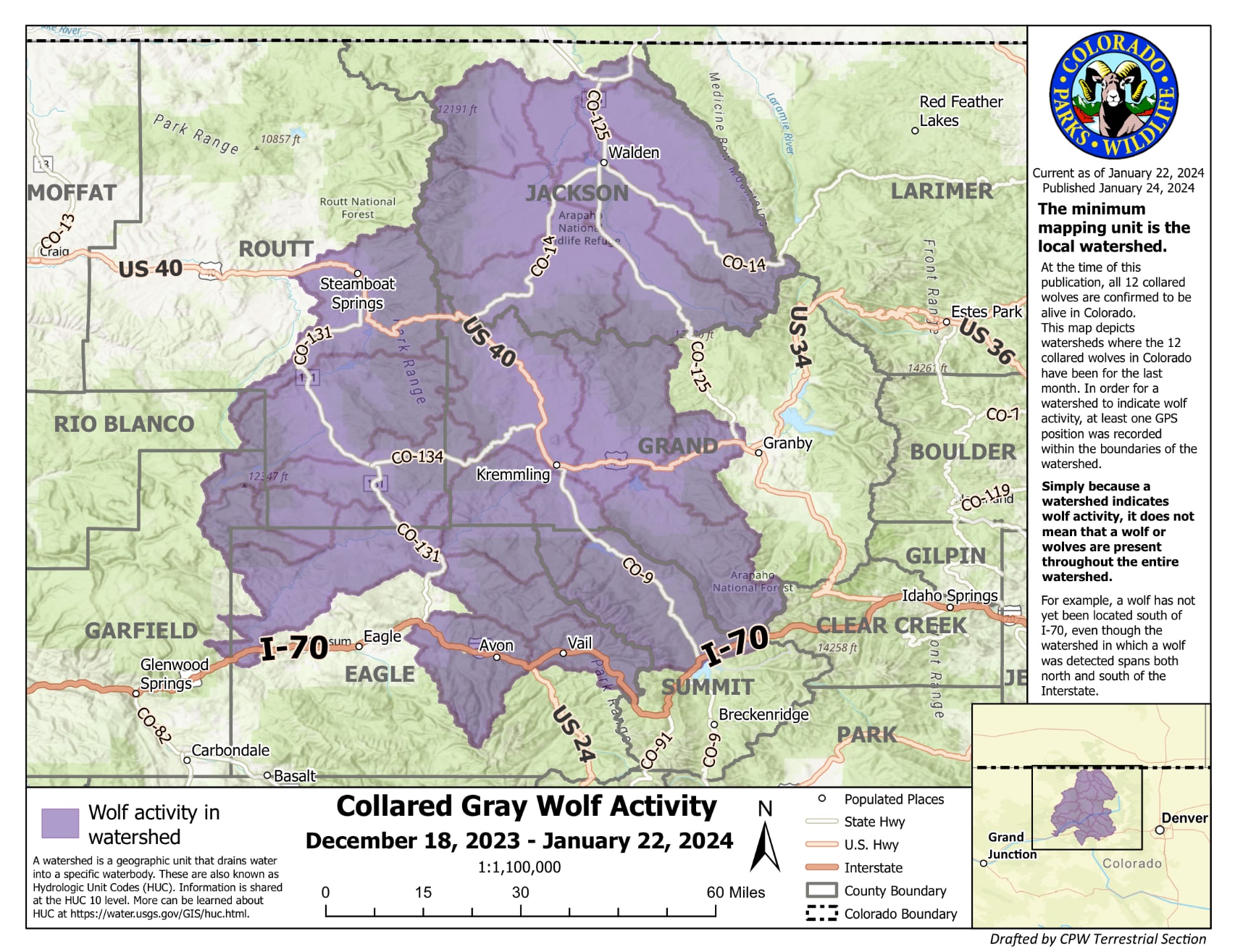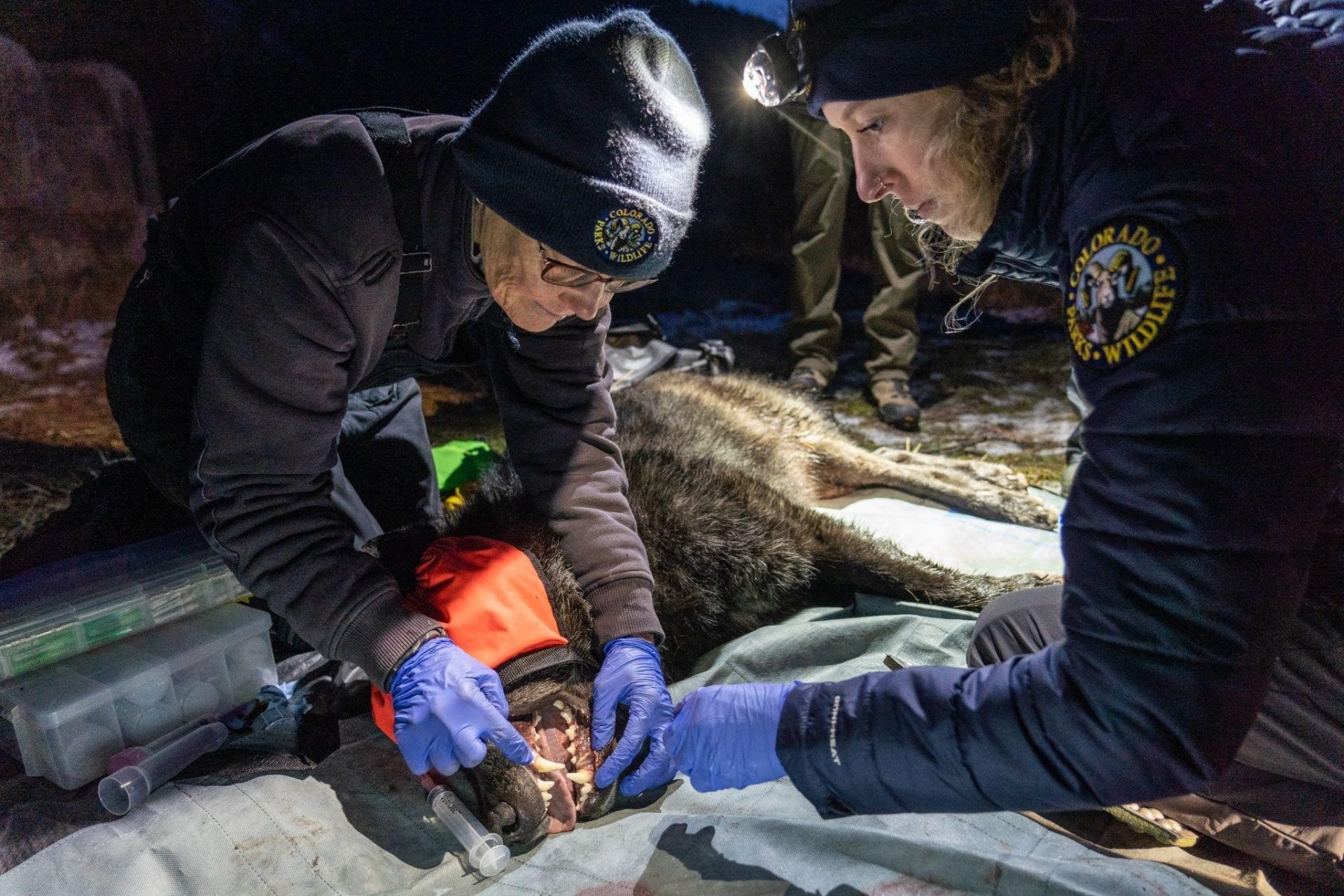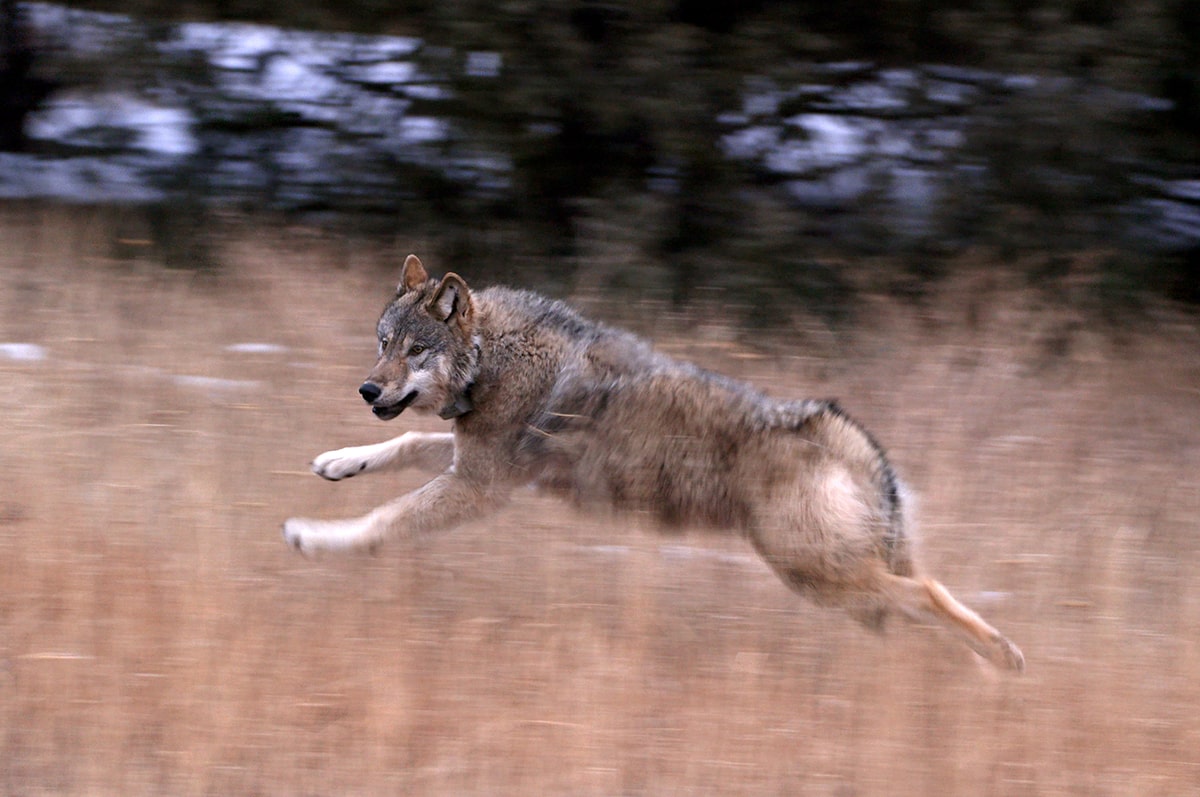
Colorado Parks and Wildlife (CPW) has released a “Collared Gray Wolf Activity Map” which will help inform the public, recreationists, and livestock producers on where wolves have been in the past month. This map will be updated with new information on a monthly basis, produced on the fourth Wednesday of every month, and will reflect data for the prior month, give or take several days.
CPW also announced last week its intentions to release an additional 15 wolves on top of the 10 released in December but this will not take place until the next release and capture season, which starts in December 2024. These wolves will be sourced from the Confederated Tribes of the Colville Reservation in Washington. The previously released 10 wolves had been captured in Oregon.
The wolf activity maps are created using GPS collar data collected from all 12 collared wolves in Colorado. This includes the 10 animals reintroduced from Oregon, as well as the two collared wolves in North Park. CPW confirms that one month after the initial release, all 10 released wolves from Oregon are still alive and none had a reported livestock depredation.

About the GPS collar data
- Currently, the collars are programmed to record a position every four hours.
- Once four locations have been recorded, the packet of four locations is then transmitted via satellite to CPW biologists.
- The frequency of both position recording and transmission of the data can be delayed by a number of factors such as dense cloud cover, closed terrain, etc.
- By looking at the data, CPW staff can learn where wolves have been, but they cannot tell where wolves are at a current point in time, nor can they predict where the wolves will go.
- To protect the wolves, specific GPS data will not be shared.
CPW’s new Map Indicating Current Collared Wolf Activity in Colorado
This map depicts watersheds where the 12 collared wolves in Colorado have been for the last month. A watershed is a geographic unit that drains water into a specific waterbody. These are also known as Hydrologic Unit Codes (HUC). Information is shared at the HUC 10 level. In order for a watershed to indicate wolf activity, at least one GPS point from the wolf collars was recorded within the boundaries of the watershed.
It is important to note that just because a watershed indicates wolf activity, it does not mean that a wolf or wolves are present throughout the entire watershed nor that they are currently in the watershed. For example, a wolf has not yet been located south of I-70, even though the watershed in which a wolf was detected spans both north and south of the Interstate.
In other words, even though Steamboat and Vail are in the purple marked area, this does not mean that wolves have been actually in the ski areas. It only means that GPS data from wolves was recorded in the respective HUC.
According to CPW, all known wolves in Colorado currently have functional GPS collars, allowing for accurate depiction of the watersheds where wolves are known to be active. However, it is expected over time that through immigration from other states and natural reproduction, the proportion of wolves that have collars will be reduced.
CPW has released a guide on how to behave in the unlikely event that you encounter a wolf:
- Do not approach the wolf and give it escape options.
- Maintain visual contact and talk calmly yet firmly to it, most wolves will run away.
- Do not run away, running will trigger a wolf’s predatory instinct to chase and attack.
- If you have a dog with you, keep the dog away from the wolf, as dogs can be seen as a threat to territorial wolves.
- If there is shelter or a vehicle nearby, face the wolf and stand upright while backing
away slowly. - Make yourself appear larger, e.g. by raising your arms, opening your jacket, or standing on a rock or tree stump.
- Place obstacles you may have, like a bike, between you and the wolf.
- If the wolf behaves more aggressively, yell, clap and/or wave.
- In the very unlikely event that a wolf attacks you, fight back, aim for a wolf ’s underbelly and face.
- If knocked down, get back up.
